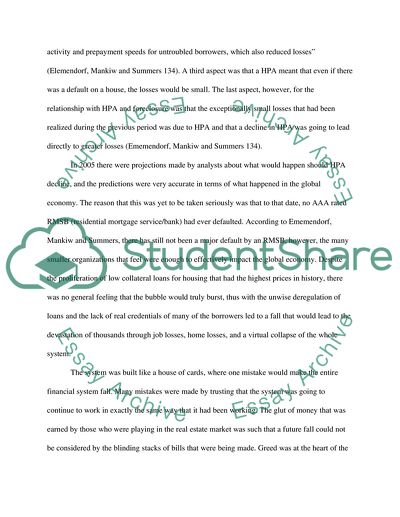Cite this document
(The Causes of the Global Economic Crisis Research Paper, n.d.)
The Causes of the Global Economic Crisis Research Paper. Retrieved from https://studentshare.org/macro-microeconomics/1747555-1write-a-paper-that-discuss-the-causes-of-the-economic-crisis-and-provides-an-outlook-for-or-forecast-of-the-near-and-longer-range-future-the-next-year-or-two-and-the-next-decade-or-so
The Causes of the Global Economic Crisis Research Paper. Retrieved from https://studentshare.org/macro-microeconomics/1747555-1write-a-paper-that-discuss-the-causes-of-the-economic-crisis-and-provides-an-outlook-for-or-forecast-of-the-near-and-longer-range-future-the-next-year-or-two-and-the-next-decade-or-so
(The Causes of the Global Economic Crisis Research Paper)
The Causes of the Global Economic Crisis Research Paper. https://studentshare.org/macro-microeconomics/1747555-1write-a-paper-that-discuss-the-causes-of-the-economic-crisis-and-provides-an-outlook-for-or-forecast-of-the-near-and-longer-range-future-the-next-year-or-two-and-the-next-decade-or-so.
The Causes of the Global Economic Crisis Research Paper. https://studentshare.org/macro-microeconomics/1747555-1write-a-paper-that-discuss-the-causes-of-the-economic-crisis-and-provides-an-outlook-for-or-forecast-of-the-near-and-longer-range-future-the-next-year-or-two-and-the-next-decade-or-so.
“The Causes of the Global Economic Crisis Research Paper”, n.d. https://studentshare.org/macro-microeconomics/1747555-1write-a-paper-that-discuss-the-causes-of-the-economic-crisis-and-provides-an-outlook-for-or-forecast-of-the-near-and-longer-range-future-the-next-year-or-two-and-the-next-decade-or-so.


